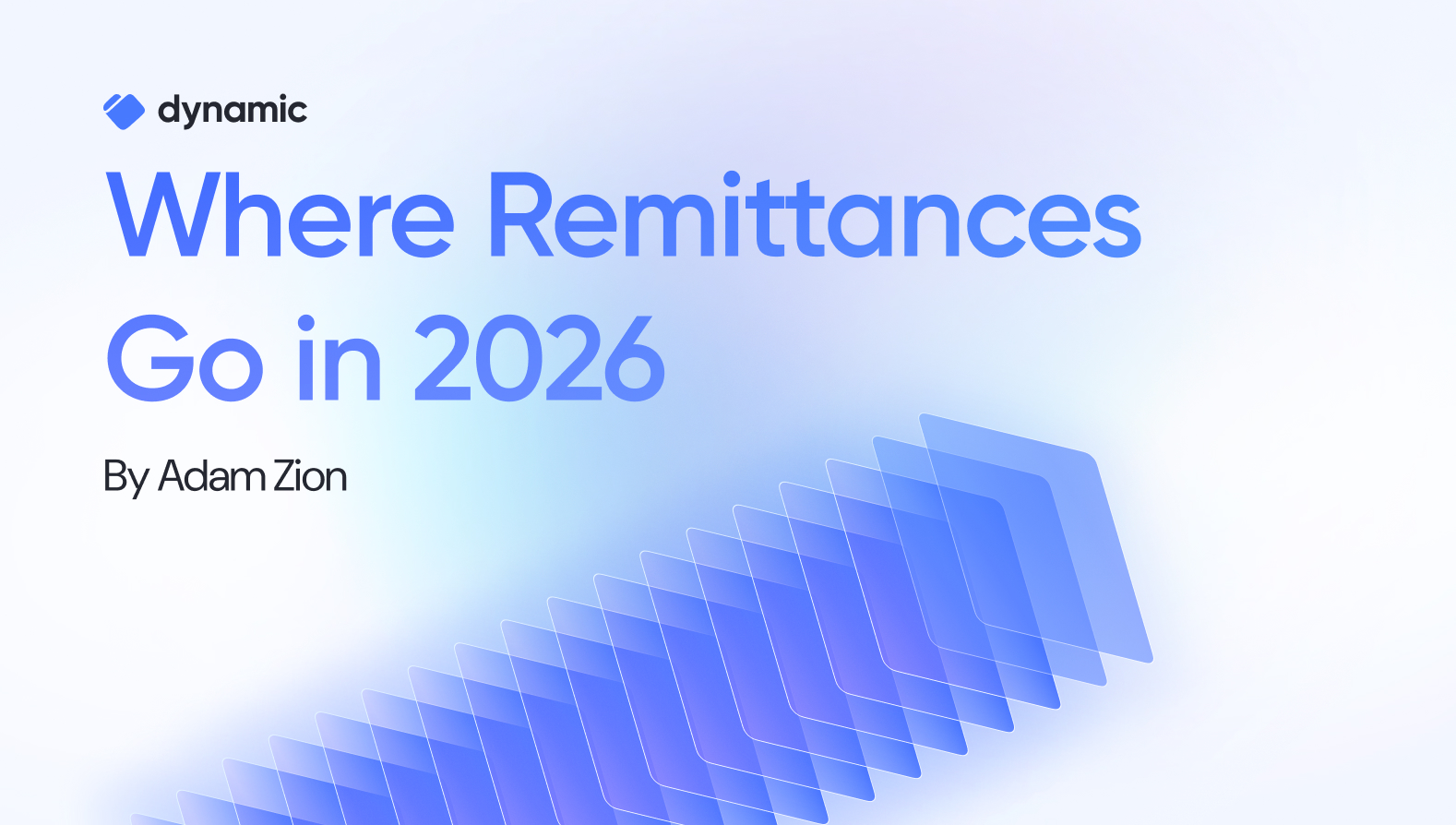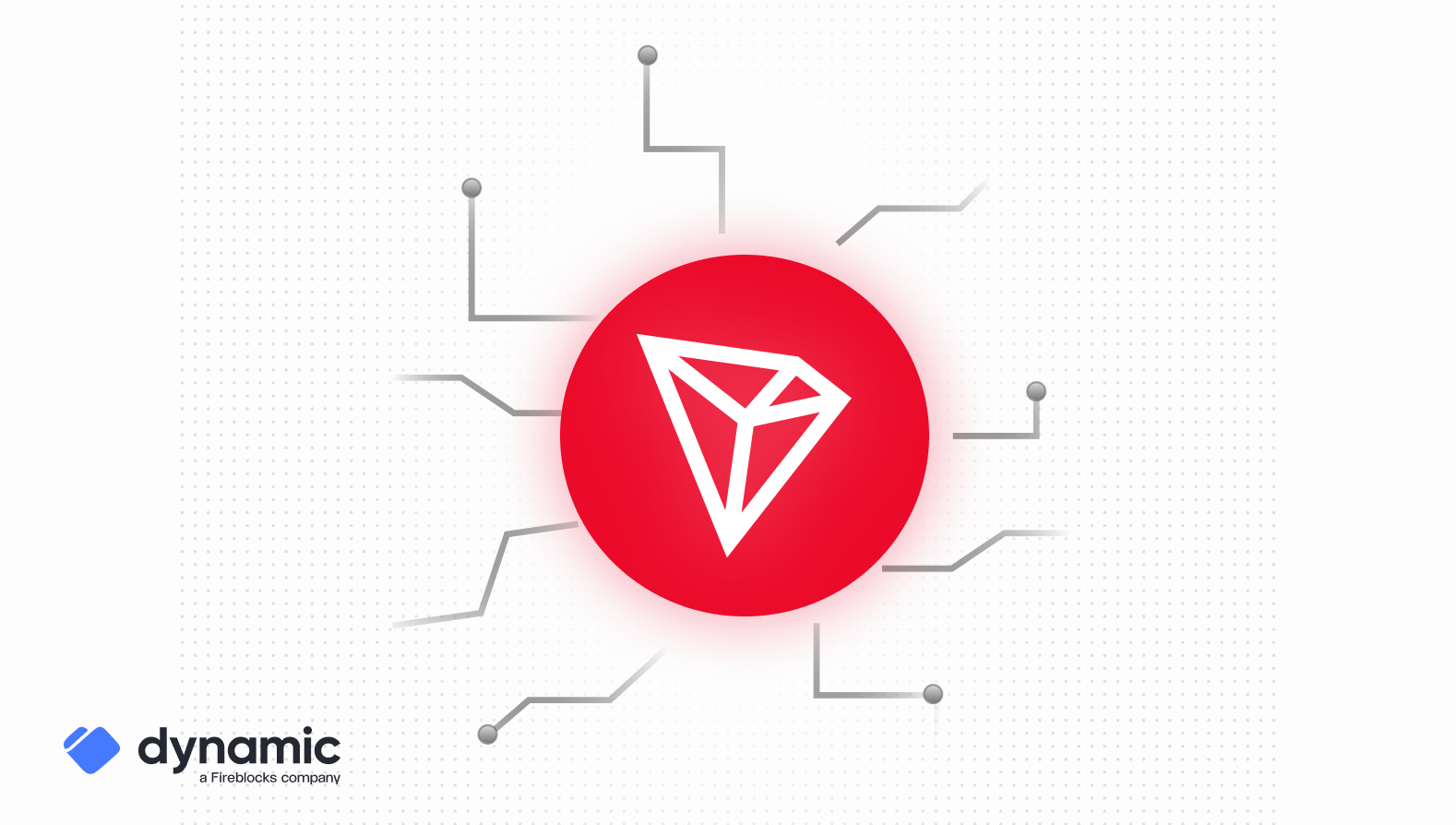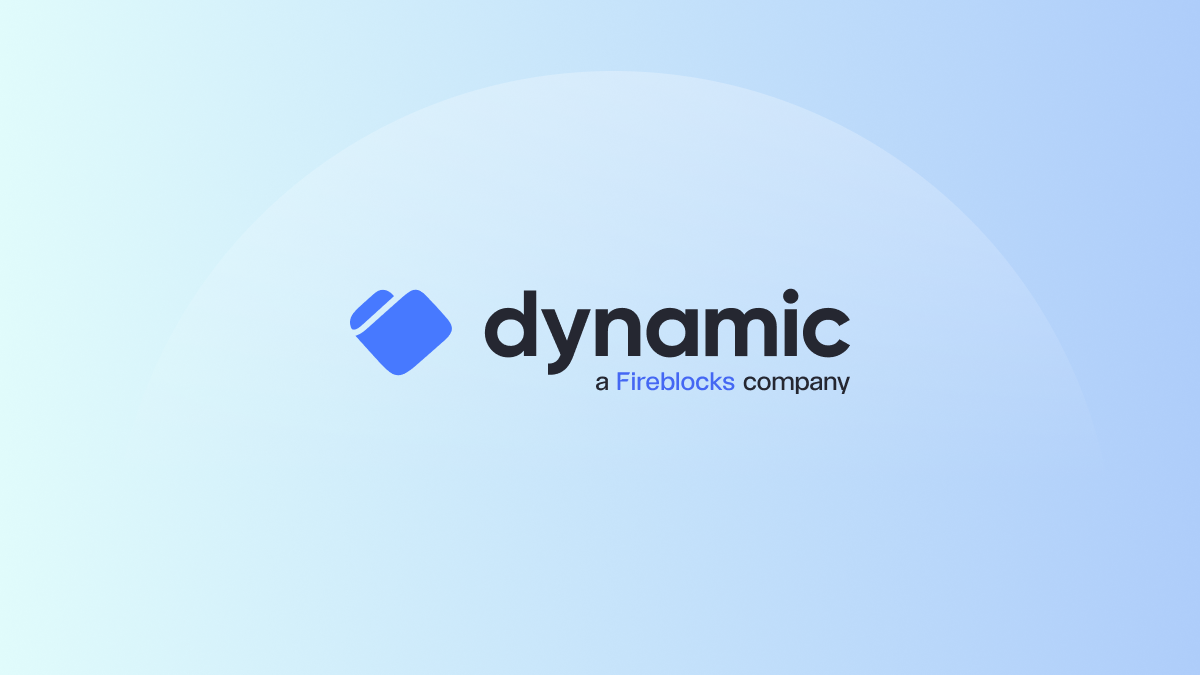Wallet Infrastructure for Backend Systems: Dynamic’s Low-Level APIs, No UI Required

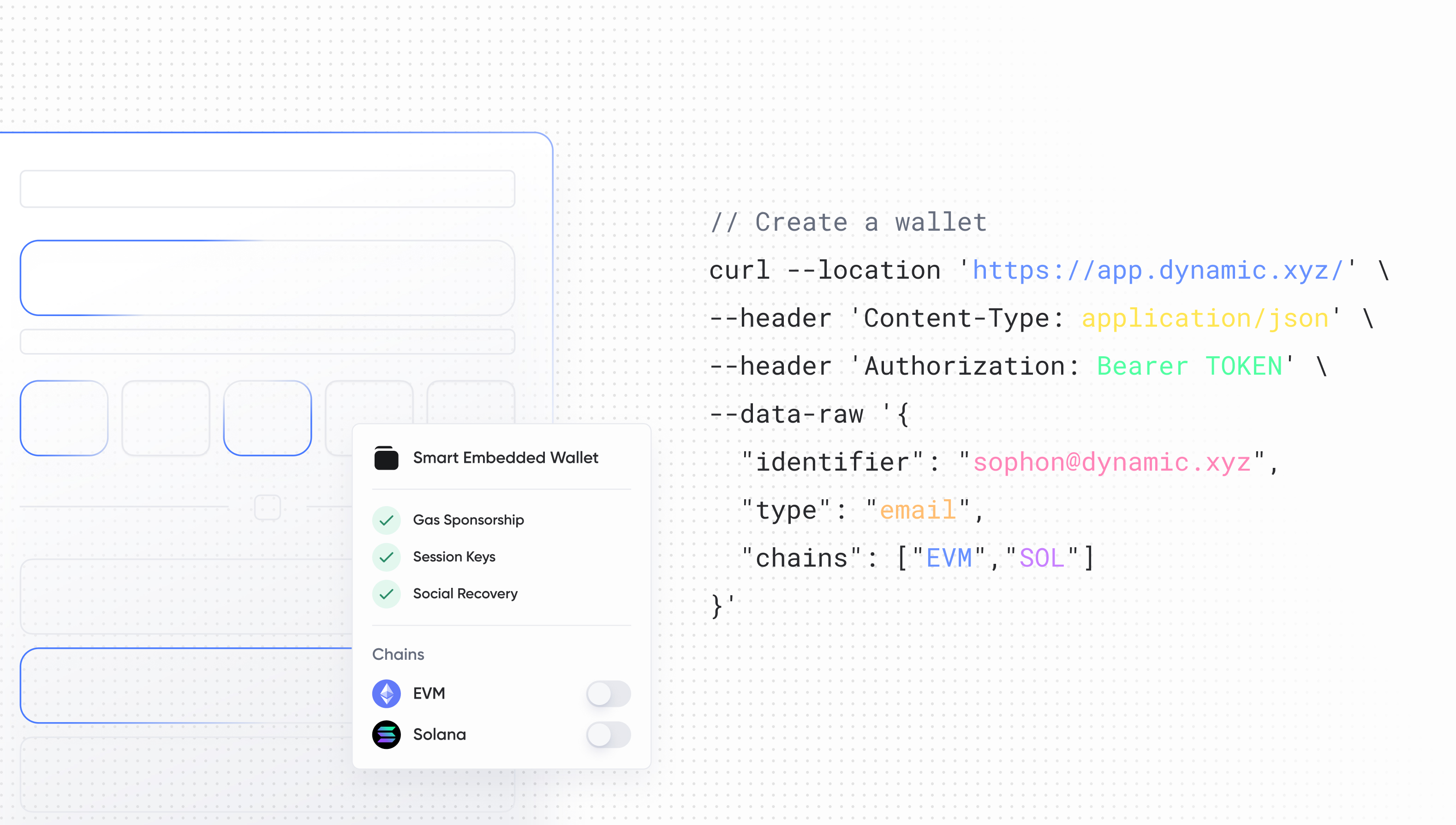
When people think of crypto wallets, they often picture browser extensions, seed phrases, and user interfaces. But for infrastructure teams powering modern fintech products like money movement orchestration platforms, wallets are not a user-facing concept. They’re backend primitives.
Dynamic Server Wallets make it possible to create and manage wallets entirely through APIs. There’s no need for a web app, frontend, or end-user. You can spin up millions of wallets, trigger transactions, and orchestrate onchain logic all from your backend. This is wallet infrastructure for the modern stack: programmable, secure, and fully invisible.
What Are Server Wallets?
A Server Wallet is a wallet controlled entirely by your backend. Unlike embedded wallets tied to users and devices, server wallets are orchestrated by systems. Think of them like programmable accounts that execute logic without user interaction.
They’re perfect for:
- Automated payouts or settlements
- Reconciliation activities
- Onchain logic execution
- Agentic payment flows
- Institutional treasury operations
- Programmable money movement
With Dynamic, these wallets run on secure, high-performance MPC infrastructure. And they’re yours to fully control programmatically.
Server Wallets are also a fit for companies building B2B or B2B2C infrastructure without a frontend. Orchestration platforms and backend-first fintech products can embed wallets within their systems without surfacing Dynamic directly. In these cases, Dynamic operates fully behind the scenes, offering a complete infrastructure layer while preserving full brand and product control.
Build Logic, Not Interfaces
With Dynamic, you don’t need to build a frontend to control value. Wallets can be created, managed, and triggered entirely through backend logic. This means engineers can focus on automating settlements, routing payments, or responding to contract events without worrying about user interaction or device management.
Dynamic gives you the flexibility to integrate wallet capabilities into any system architecture, whether you're orchestrating flows across services or running treasury operations internally.
You can use Dynamic’s APIs to:
- Create any number of wallets on demand
- Sign transactions and messages
- Set policies around approval, whitelisting, and limits
- Route funds or interact with smart contracts
Dynamic can also be used in authentication-only workflows. If you are building a custom UI or backend system and only need API-level access for authentication, without adopting a full wallet interface, that is supported as well. This approach gives you flexibility to build your own auth logic while still benefiting from secure infrastructure.
Designed for Programmatic Scale
Whether you’re managing 10 wallets or 10 million, your infrastructure shouldn’t change. Dynamic’s system is designed from the ground up to support:
- Seamless wallet creation at scale
- Sub-second signing for real-time execution
- Policy orchestration at the account level
- Key resharing and rotation without full regeneration
- Raw signer access for transaction signing across an extensive list of supported chains, including those using ECDSA
Every wallet can be governed by fine-grained policies such as transaction limits, destination allowlists, approval logic, or time-based access. These controls are defined and enforced programmatically, giving you the power to shape how value moves across your systems with precision. And because policy enforcement is built into our MPC-backed infrastructure, you get all the safety of MPC with all the simplicity of calling a single API.
TSS-MPC Provides the Perfect Balance: Security Without Tradeoffs
Dynamic Server Wallets are built on TSS-MPC (Threshold Signature Scheme – Multi-Party Computation), a cryptographic technique where the full private key never exists. As a result, this approach eliminates any single point of failure, while also providing several paths for account recovery and other developer flexibility.
In practice, this gives developers:
- No single point of failure: Even if one component is compromised, it’s useless on its own as a full key is never constructed.
- Developer flexibility: Developers can choose the signature scheme that best fits their security model, architecture, or compliance requirements.
- The ability to scale safely: MPC handles scale while still maintaining sub-second signing and high throughput.
- Seamless recovery and refresh: Key shares can be rotated or reissued without disrupting the wallet, enabling account recovery or periodic key refresh.
Our MPC is hardware-independent and auditable by design. We’re SOC 2 Type II compliant, run regular third-party audits with firms like Cure53, and maintain an active public bug bounty program through HackerOne. Every layer of our infrastructure is built with rigorous security controls, and we offer advanced MFA options to protect both accounts and transactions.
Comparing Dynamic’s TSS-MPC to Other Key Management Approaches
To understand how Dynamic’s key management architecture differs in both design and capability, we’ve laid out a side-by-side comparison with other common methods:
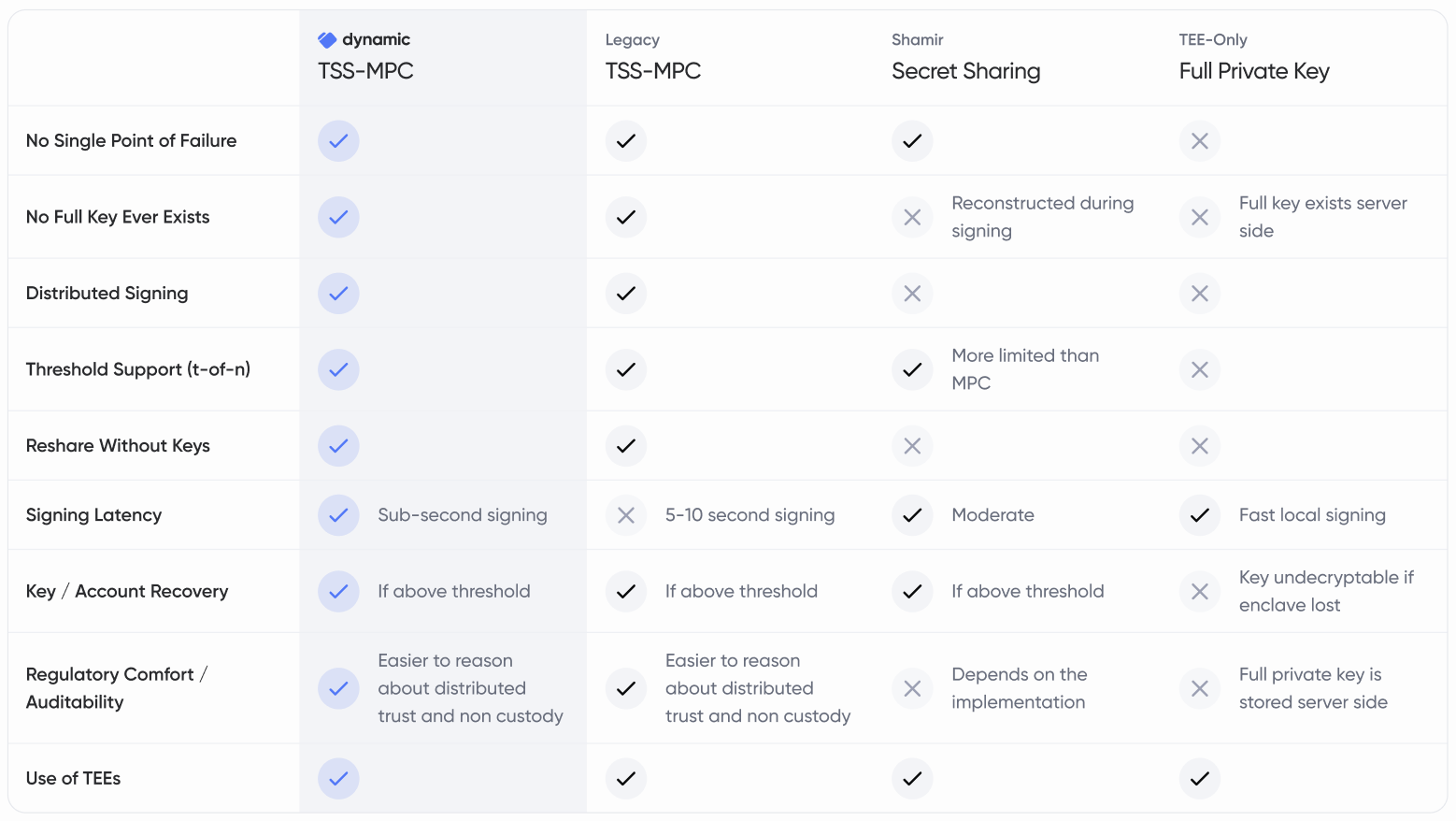
Ready to start building your own solution using Dynamic’s low level APIs? Follow the quick start guide in our docs here.
Share this article

